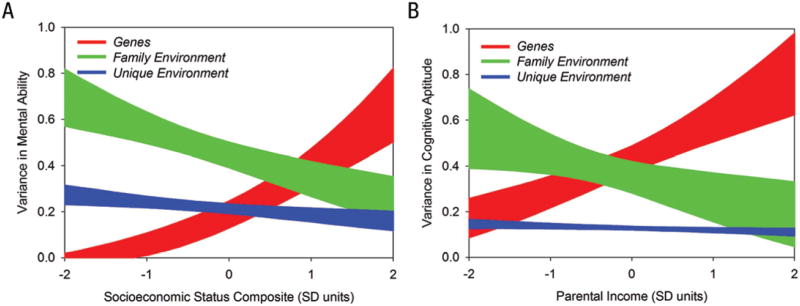Fig. 2.

Variance in mental ability as a function of SES in late infancy (age 2 years) (A). Data come from a nationally representative sample of American twins, 25% of whom lived below the poverty line (Tucker-Drob, Rhemtulla, Harden, Turkheimer, & Fask, 2011). Variance in cognitive aptitude as a function of parental income in adolescence (age 17 years) (B). Data come from a positively selected sample of adolescent twins who sat for the National Merit Scholarship Qualifying Test (Harden, Turkheimer, & Loehlin, 2007), very few of whom were likely to be living in poverty. Because a Gene × SES interaction was detected in this more positively selected sample, Harden et al. (2007) concluded that “genotype-by-environment interactions in cognitive development are not limited to severely disadvantaged environments, as has been previously suggested.” Shading around each line represents the imprecision of the estimate (± 1 SE). The family environment, often termed the shared environment, represents environmental influences that make siblings raised in the same family more similar to one another. The unique environment, often termed the nonshared environment, represents environmental influences that differentiate siblings raised in the same family.
